-
 Bitcoin
Bitcoin $115600
-1.99% -
 Ethereum
Ethereum $3630
1.08% -
 XRP
XRP $3.083
-0.76% -
 Tether USDt
Tether USDt $1.000
-0.04% -
 BNB
BNB $761.7
-0.34% -
 Solana
Solana $178.8
-3.64% -
 USDC
USDC $1.000
0.02% -
 Dogecoin
Dogecoin $0.2273
-3.60% -
 TRON
TRON $0.3138
3.02% -
 Cardano
Cardano $0.8009
0.54% -
 Hyperliquid
Hyperliquid $42.11
-2.45% -
 Stellar
Stellar $0.4151
-1.11% -
 Sui
Sui $3.649
-0.60% -
 Chainlink
Chainlink $17.50
-2.14% -
 Bitcoin Cash
Bitcoin Cash $523.8
3.98% -
 Hedera
Hedera $0.2369
-1.63% -
 Avalanche
Avalanche $23.15
-1.55% -
 Litecoin
Litecoin $110.3
-0.73% -
 UNUS SED LEO
UNUS SED LEO $8.953
-0.38% -
 Shiba Inu
Shiba Inu $0.00001329
-1.83% -
 Toncoin
Toncoin $3.089
-1.67% -
 Ethena USDe
Ethena USDe $1.001
-0.03% -
 Polkadot
Polkadot $3.934
-2.93% -
 Uniswap
Uniswap $9.967
-1.82% -
 Monero
Monero $332.3
5.75% -
 Dai
Dai $1.000
-0.01% -
 Bitget Token
Bitget Token $4.425
-4.47% -
 Pepe
Pepe $0.00001200
-4.16% -
 Aave
Aave $286.9
0.01% -
 Cronos
Cronos $0.1260
5.04%
How to build a DApp on the blockchain?
DApps leverage blockchain technology, offering decentralized, transparent applications powered by smart contracts, with frontends connected via tools like Web3.js or ethers.js.
Jul 21, 2025 at 10:49 am
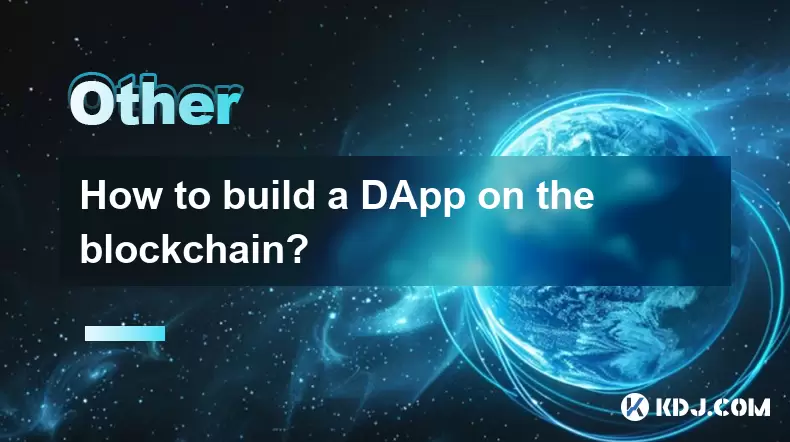
Understanding the Basics of DApps
A Decentralized Application (DApp) operates on a blockchain network, offering transparency, immutability, and decentralization. Unlike traditional applications, DApps do not rely on a central authority. Instead, they use smart contracts to execute logic and interact with users. Before diving into development, it is crucial to understand the key components of a DApp: a frontend interface, a backend powered by smart contracts, and a decentralized storage system.
DApps can be built on various blockchain platforms, such as Ethereum, Binance Smart Chain, or Solana. Each platform has its own set of tools, languages, and protocols. Choosing the right blockchain depends on your project's requirements, including transaction speed, cost, and scalability.
Selecting the Right Blockchain Platform
When building a DApp, selecting the appropriate blockchain is essential. Ethereum is the most popular platform for DApp development due to its mature ecosystem and support for Solidity, a smart contract programming language. However, high gas fees and slower transaction times may push developers to alternatives like Polygon or Binance Smart Chain (BSC).
For developers looking for high throughput and low latency, Solana offers a compelling option. It supports Rust and C for writing smart contracts and provides faster transaction finality. Avalanche and Fantom are also gaining traction due to their interoperability features and low fees.
Each platform has its own wallet integrations, block explorers, and development tools. Researching and comparing these aspects will help you make an informed decision before starting development.
Setting Up the Development Environment
To begin building your DApp, you need to set up a proper development environment. Start by installing Node.js and npm, which are essential for running JavaScript-based tools. Next, install Truffle, a development framework for Ethereum-based smart contracts.
You will also need a local blockchain for testing purposes. Tools like Ganache or Hardhat allow you to simulate a blockchain environment on your machine. These tools help you deploy and test smart contracts without spending real cryptocurrency.
For frontend development, frameworks like React or Vue.js are commonly used in conjunction with Web3.js or ethers.js to interact with the blockchain. Make sure to install MetaMask or another compatible wallet to interact with your DApp in the browser.
Writing and Deploying Smart Contracts
Smart contracts are the backbone of any DApp. They define the rules and logic of the application. Using Solidity, you can write a basic contract that handles user interactions and data storage. Here’s a simple example:
pragma solidity ^0.8.0;contract SimpleStorage {
uint storedData;
function set(uint x) public {
storedData = x;
}
function get() public view returns (uint) {
return storedData;
}
}
After writing the contract, compile it using Truffle or Remix IDE. Once compiled, deploy it to your local blockchain using Ganache or a testnet like Ropsten or Goerli. Deployment requires gas, which is paid in the native token of the blockchain (e.g., ETH on Ethereum).
Once deployed, you can interact with the contract using Web3.js or ethers.js from your frontend application. Ensure that your contract is secure by performing audits and using tools like Slither or MythX.
Integrating the Frontend with the Blockchain
The frontend of your DApp connects users to the blockchain. Use React to create a user interface that interacts with your smart contract. Install web3.js or ethers.js to connect to the user’s wallet and send transactions.
Here’s how to connect MetaMask:
- Check if the user has MetaMask installed.
- Request permission to access the user’s account.
- Connect to the correct blockchain network.
- Call smart contract functions using the provider.
You can display contract data by calling view functions and update the UI accordingly. For example, calling the get() function from the previous example will retrieve the stored value and display it on the screen.
Ensure that your frontend handles transaction receipts, errors, and loading states to provide a smooth user experience.
Testing and Deploying Your DApp
Before launching your DApp, thorough testing is necessary. Use Jest or Mocha to write unit tests for your smart contracts. Test all functions, including edge cases and error handling.
Deploy your DApp to a testnet first to simulate real-world conditions. Use platforms like Infura or Alchemy to connect to the Ethereum network without running a full node. Once tested, deploy your smart contract to the mainnet and host your frontend on IPFS, Filecoin, or a traditional web host.
Make sure to monitor your DApp for any issues and provide users with clear instructions on how to interact with it. Use tools like Blockchair or BscScan to track transactions and debug issues.
FAQs
What is the difference between a DApp and a traditional app?
A DApp runs on a decentralized network and uses smart contracts, while a traditional app relies on centralized servers and databases.
Do I need to pay to deploy a DApp?
Yes, deploying a smart contract requires paying gas fees in the native cryptocurrency of the chosen blockchain.
Can I build a DApp without knowing Solidity?
While Solidity is commonly used for Ethereum-based DApps, other languages like Rust (for Solana) or Vyper (an alternative to Solidity) can be used depending on the platform.
Is it possible to update a smart contract after deployment?
Smart contracts are immutable by design. However, developers can deploy a new version and redirect users to the updated contract address.
Disclaimer:info@kdj.com
The information provided is not trading advice. kdj.com does not assume any responsibility for any investments made based on the information provided in this article. Cryptocurrencies are highly volatile and it is highly recommended that you invest with caution after thorough research!
If you believe that the content used on this website infringes your copyright, please contact us immediately (info@kdj.com) and we will delete it promptly.
- XRP, Ripple, and Crypto: Riding the Wave in the Digital Asset Sea
- 2025-07-25 13:10:12
- Bitcoin, Crypto, and Ethereum: Navigating the New York Minute Market
- 2025-07-25 13:30:12
- SYRUP Listing, DeFi Lending, and Institutional Adoption: A New Era?
- 2025-07-25 13:30:12
- Binance Coin (BNB) Technical Breakout: Eyes on $1,200 Target
- 2025-07-25 13:35:12
- NFTs, Trademarks, and Judgments: A New York Minute on the Yuga Labs Case
- 2025-07-25 12:30:11
- Bitcoin, Nativo Resources, and Gold Operations: A New Era for Corporate Treasury
- 2025-07-25 12:50:11
Related knowledge
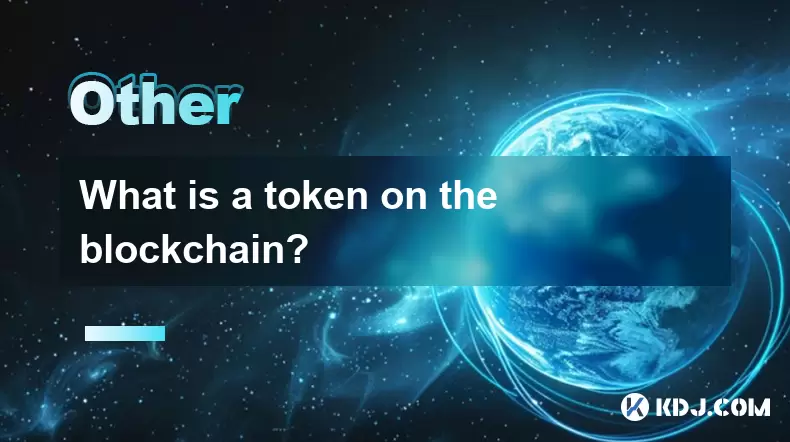
What is a token on the blockchain?
Jul 21,2025 at 07:00am
Understanding the Concept of a TokenIn the realm of blockchain technology, a token is a digital representation of an asset or utility that exists on a...
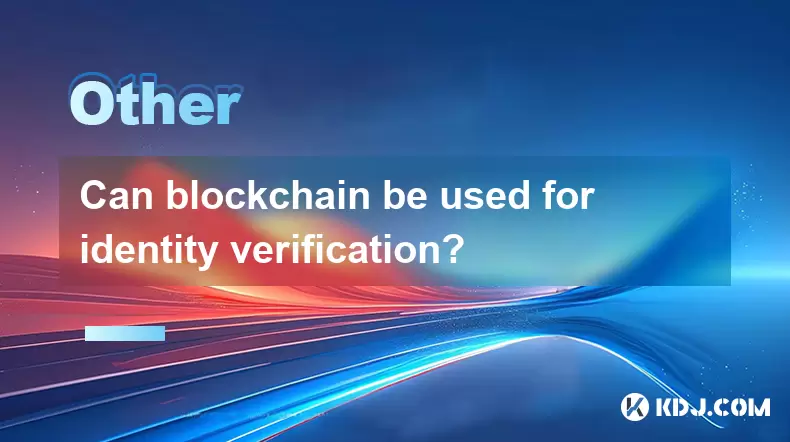
Can blockchain be used for identity verification?
Jul 18,2025 at 02:14pm
Understanding Identity Verification in the Digital AgeIn the modern digital landscape, identity verification has become a critical component for ensur...
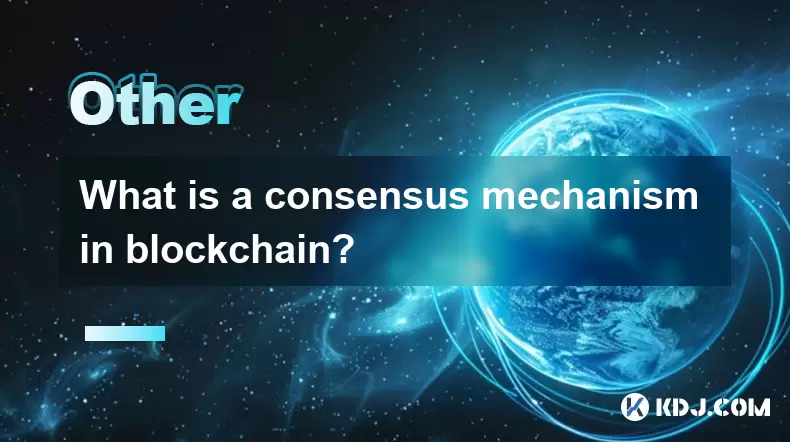
What is a consensus mechanism in blockchain?
Jul 21,2025 at 03:01am
Understanding the Basics of Consensus MechanismsA consensus mechanism is a critical component of any blockchain network. It refers to the process by w...
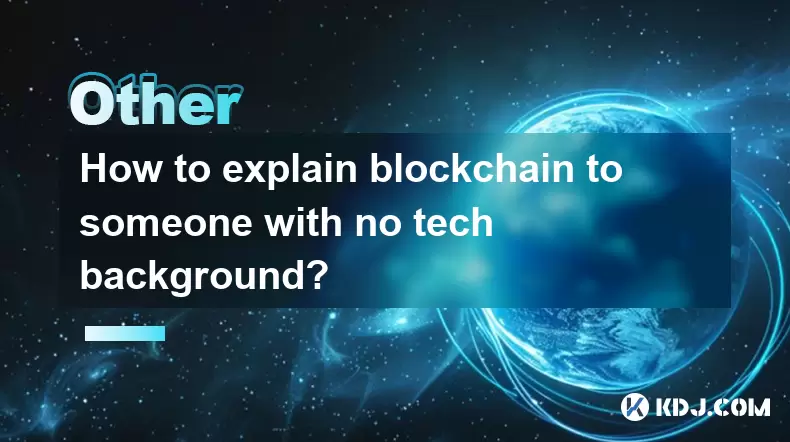
How to explain blockchain to someone with no tech background?
Jul 18,2025 at 11:08pm
Understanding the Basics of BlockchainTo explain blockchain to someone with no tech background, it's essential to start with simple analogies and avoi...

Who invented blockchain technology?
Jul 23,2025 at 01:28am
Origins of Blockchain TechnologyBlockchain technology did not emerge from a single inventor or institution. Instead, it evolved through a series of ac...
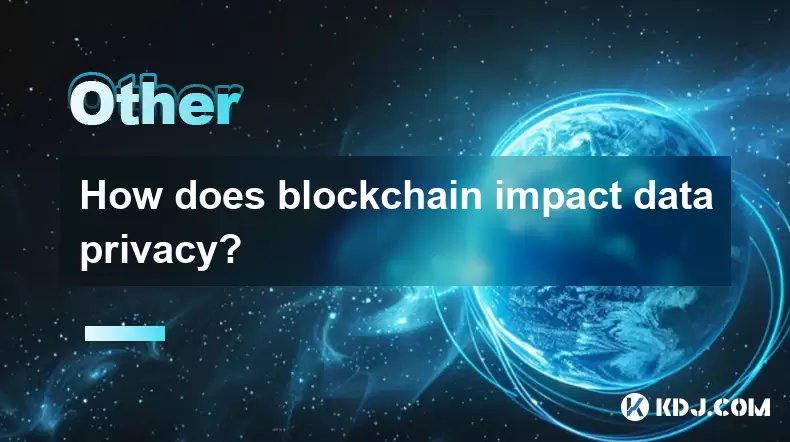
How does blockchain impact data privacy?
Jul 21,2025 at 02:21pm
Understanding the Role of Blockchain in Data PrivacyBlockchain technology, originally developed as the underlying infrastructure for cryptocurrencies ...

What is a token on the blockchain?
Jul 21,2025 at 07:00am
Understanding the Concept of a TokenIn the realm of blockchain technology, a token is a digital representation of an asset or utility that exists on a...

Can blockchain be used for identity verification?
Jul 18,2025 at 02:14pm
Understanding Identity Verification in the Digital AgeIn the modern digital landscape, identity verification has become a critical component for ensur...

What is a consensus mechanism in blockchain?
Jul 21,2025 at 03:01am
Understanding the Basics of Consensus MechanismsA consensus mechanism is a critical component of any blockchain network. It refers to the process by w...

How to explain blockchain to someone with no tech background?
Jul 18,2025 at 11:08pm
Understanding the Basics of BlockchainTo explain blockchain to someone with no tech background, it's essential to start with simple analogies and avoi...

Who invented blockchain technology?
Jul 23,2025 at 01:28am
Origins of Blockchain TechnologyBlockchain technology did not emerge from a single inventor or institution. Instead, it evolved through a series of ac...

How does blockchain impact data privacy?
Jul 21,2025 at 02:21pm
Understanding the Role of Blockchain in Data PrivacyBlockchain technology, originally developed as the underlying infrastructure for cryptocurrencies ...
See all articles

























































































